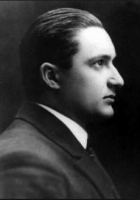










Gustav Tauschek who lived between(1899-1945) was an Austrian pioneer of Information technology and developed numerous improvements for punched card-based calculating machines from 1922 to 1945.
First magnetic drum memory, a magnetic data storage device and an early form of computer memory, which plays an important role in the computer memory development (e.g. used in ABC computer) and was widely used in the 1950s and into the 1960s, was invented by the Austrian engineer Gustav Tauschek (1899-1945) in 1932 in Austria. Tauschek was a genius self-taught Viennese engineer, who besides the drum-memory, invented also many devices and systems for the punch-card machinery, as well as the first OCR (Optical Character Recognition) machine in 1928, so called Reading Machine.
During the years 1926–1930 Tauschek worked for Rheinmetall in Sömmerda, Germany, where he developed a complete punched card-based accounting system, which however was never mass-produced. In the spring of 1928, Rheinmetall created a subsidiary company that was assigned to develop new punched card-based machines. In the fall of the same year, the subsidiary was bought by IBM, thereby assuring its monopoly on the market. Tauschek was awarded a five-year contract and sold 169 patents to IBM in his life-time.
In 1932 Tauschek obtained a US patent for his magnetic drum device.